11 Best Herbal Teas For Hyperthyroidism

Herbal teas for Hyperthyroidism are a natural and non-invasive approach to treating an overactive thyroid gland, characterized by excessive production of thyroid hormones.
These teas are rich in antioxidants, vitamins, and minerals that help to regulate thyroid function, reduce inflammation, and alleviate symptoms such as weight loss, anxiety, and rapid heartbeat.
Certain herbal teas, such as Ashwagandha, Bladderwrack, and Licorice root, have been found to have a positive effect on hyperthyroidism, as they contain compounds that help to slow down thyroid hormone production and promote a healthy balance.
Other beneficial herbal teas for hyperthyroidism include Peppermint, Chamomile, and Dandelion root, which aid in digestion, reduce stress, and promote detoxification, ultimately contributing to a more balanced thyroid function.
According to "International journal of biological macromolecules", teas for hyperthyroidism may be beneficial as a potential alternative treatment, as polyherbal extracts from certain medicinal plants have been shown to restore thyroid function to normal and reduce the increase of liver enzymes caused by hyperthyroidism.
Below there's a list of the 11 best herbal teas for hyperthyroidism.
- 1. Cassia angustifolia teas
- 2. Silybum marianum teas
- 3. Zingiber officinale teas
- 4. Angelica sinensis teas
- 5. Panax ginseng teas
- 6. Astragalus membranaceus teas
- 7. Glycyrrhiza glabra teas
- 8. Valeriana officinalis teas
- 9. Hypericum perforatum teas
- 10. Lavandula angustifolia teas
- 11. Melissa officinalis teas
Also you may be interested in...
TODAY'S FREE BOUNDLE
Herb Drying Checklist + Herbal Tea Shopping List + Medicinal Herbs Flashcards
Enter you best email address below to receive this bundle (3 product valued $19.95) for FREE + exclusive access to The Aphotecary Letter.
$19.95 -> $0.00
1. Cassia angustifolia teas
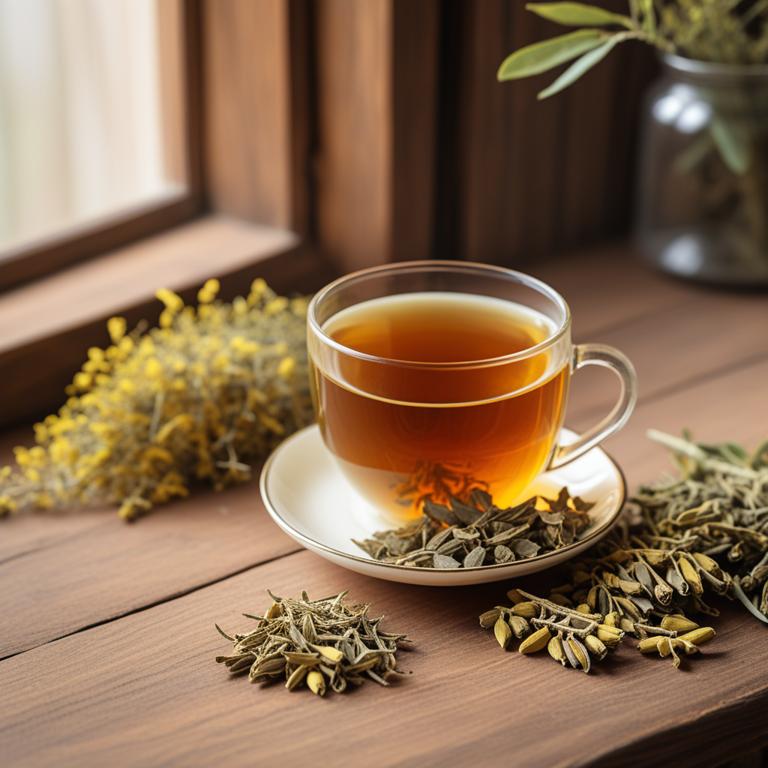
Cassia angustifolia teas have been traditionally used to treat hyperthyroidism due to their antithyroid and antioxidant properties.
The bioactive constituents, including saponins, flavonoids, and anthraquinones, help to inhibit the synthesis of thyroid hormones, thereby reducing the symptoms of hyperthyroidism.
The herbal preparation's ability to modulate the thyroid axis and reduce oxidative stress makes it a potential natural remedy for this condition.
Regular consumption of Cassia angustifolia teas has been shown to provide relief from hyperthyroidism symptoms, including weight loss, tremors, and palpitations, and may also help to regulate thyroid function and promote overall well-being.
2. Silybum marianum teas

Silybum marianum teas, also known as milk thistle teas, have been traditionally used to treat hyperthyroidism due to their anti-inflammatory and antioxidant properties.
The silymarin compound present in these teas helps to reduce thyroid hormone production and alleviate symptoms associated with hyperthyroidism, such as weight loss, tremors, and anxiety.
The bioactive constituents of silymarin, including silibinin, silidianin, and silicristin, have been shown to inhibit the activity of thyroid enzymes, thereby reducing the production of thyroid hormones.
The regular consumption of Silybum marianum teas may help to regulate thyroid function, alleviate symptoms, and provide relief from hyperthyroidism without the need for medications or surgery.
Related Study
According to "Journal of ethnopharmacology", Silybum marianum teas for hyperthyroidism may have a potential therapeutic effect in reducing the proliferation of lymphocytes, as a significant decrease in proliferation assay was observed with concentrations of 0.1-10 microg/ml of Silybum marianum (SI<0.46, P<0.05).
3. Zingiber officinale teas

Zingiber officinale teas, derived from the rhizomes of the ginger plant, have been traditionally used to treat hyperthyroidism due to their anti-inflammatory and antioxidant properties.
The bioactive constituents, including gingerols and shogaols, help to inhibit the production of thyroid hormones and reduce inflammation in the thyroid gland.
By reducing oxidative stress and modulating the immune response, Zingiber officinale teas can help alleviate symptoms of hyperthyroidism, such as weight loss, tremors, and anxiety.
The benefits of using Zingiber officinale teas to treat hyperthyroidism include reduced thyroid hormone levels, improved thyroid function, and a decrease in the risk of complications associated with hyperthyroidism.
4. Angelica sinensis teas
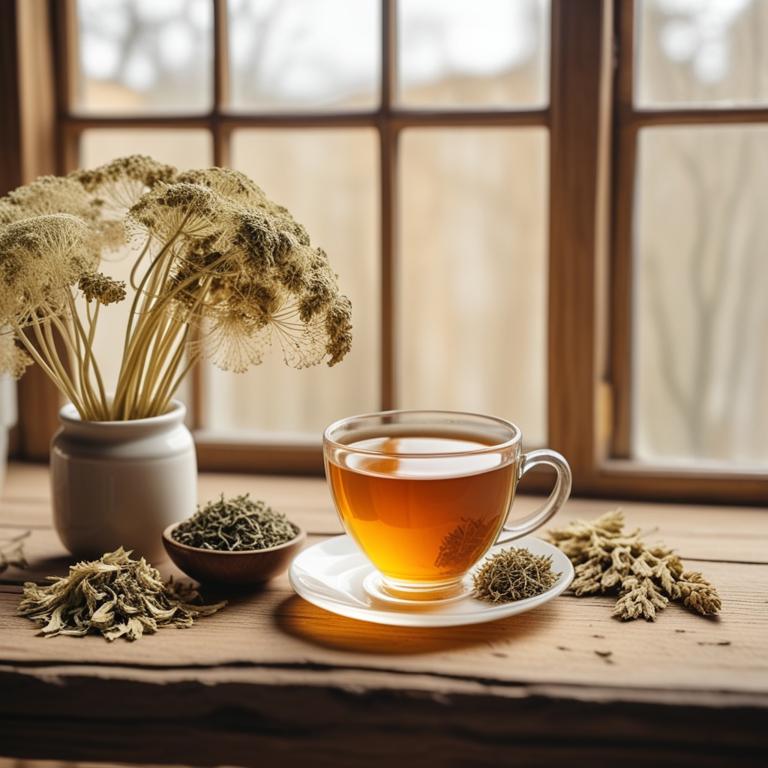
Angelica sinensis teas have been traditionally used to treat hyperthyroidism due to their unique properties that help to regulate thyroid function and alleviate symptoms associated with this condition.
The herbal preparation contains bioactive constituents such as ferulic acid, caffeic acid, and isorhapontigenin, which have been shown to have anti-inflammatory and antioxidant effects that help to reduce thyroid hormone production and alleviate symptoms.
These properties help to regulate the thyroid gland's function, thereby reducing the excessive production of thyroid hormones that is characteristic of hyperthyroidism.
The benefits of using Angelica sinensis teas to treat hyperthyroidism include reduced symptoms such as weight loss, palpitations, and tremors, as well as improved overall thyroid function and well-being.
5. Panax ginseng teas
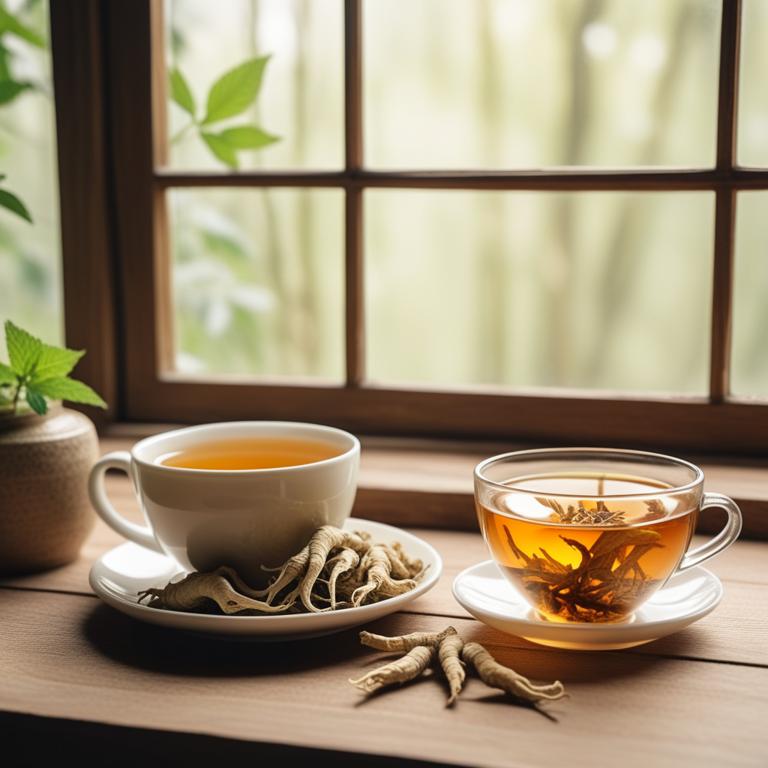
Panax ginseng teas, derived from the roots of the Panax ginseng plant, have been traditionally used to treat hyperthyroidism due to their adaptogenic and anti-inflammatory properties.
The bioactive constituents of Panax ginseng teas, including ginsenosides and polyphenols, help to regulate thyroid function by modulating the production of thyroid hormones and reducing oxidative stress.
Regular consumption of Panax ginseng teas may help alleviate symptoms of hyperthyroidism, such as weight loss and tremors, by promoting a balance in thyroid hormone levels.
The benefits of using Panax ginseng teas to treat hyperthyroidism include reduced reliance on synthetic medications, improved thyroid function, and enhanced overall well-being.
6. Astragalus membranaceus teas
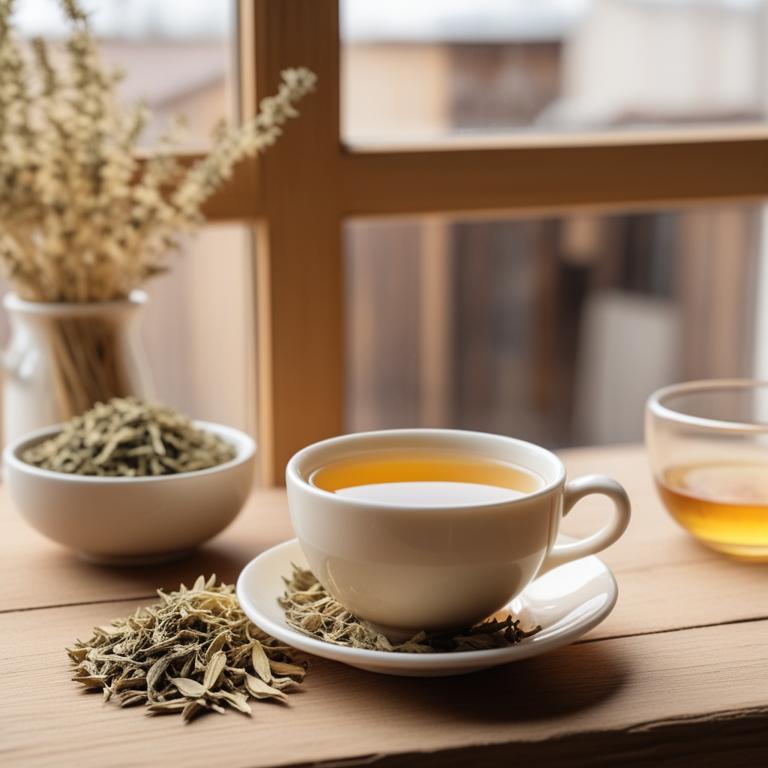
Astragalus membranaceus teas have been traditionally used to treat hyperthyroidism due to their adaptogenic and immunomodulatory properties.
This herbal preparation helps to treat hyperthyroidism by regulating the thyroid gland's function, reducing inflammation, and modulating the immune system's response.
The bioactive constituents of Astragalus membranaceus teas, including flavonoids, saponins, and polysaccharides, are believed to contribute to its therapeutic effects by inhibiting the production of thyroid hormones and reducing oxidative stress.
The benefits of using Astragalus membranaceus teas to treat hyperthyroidism include reduced symptoms such as weight loss, anxiety, and palpitations, as well as improved overall thyroid function and well-being.
7. Glycyrrhiza glabra teas

Glycyrrhiza glabra teas have been traditionally used to treat hyperthyroidism, an overactive thyroid condition characterized by excessive production of thyroid hormones.
The anti-inflammatory and antioxidant properties of this herbal preparation help to reduce inflammation and oxidative stress associated with hyperthyroidism, thereby alleviating symptoms such as palpitations, tremors, and weight loss.
The bioactive constituents of Glycyrrhiza glabra teas, including glycyrrhizin and flavonoids, possess inhibitory effects on the 5'-deiodinase enzyme, which is involved in the conversion of thyroxine (T4) to triiodothyronine (T3), thus helping to regulate thyroid hormone production.
Regular consumption of Glycyrrhiza glabra teas has been found to provide relief from hyperthyroidism symptoms, improve thyroid function, and promote overall well-being.
8. Valeriana officinalis teas

Valeriana officinalis teas, also known as valerian root tea, have been traditionally used to help alleviate symptoms of hyperthyroidism, a condition characterized by an overactive thyroid gland.
The sedative and anxiolytic properties of valerian root tea help to reduce anxiety and stress associated with hyperthyroidism, promoting relaxation and calming effects.
The bioactive constituents of valerian root tea, including valerenic acid, isovaleric acid, and valerenal, contribute to its therapeutic effects by inhibiting the activity of thyroid-stimulating hormone and reducing the production of thyroid hormones.
Regular consumption of valerian root tea has been found to help regulate thyroid function, reduce symptoms of hyperthyroidism, and promote overall well-being.
9. Hypericum perforatum teas
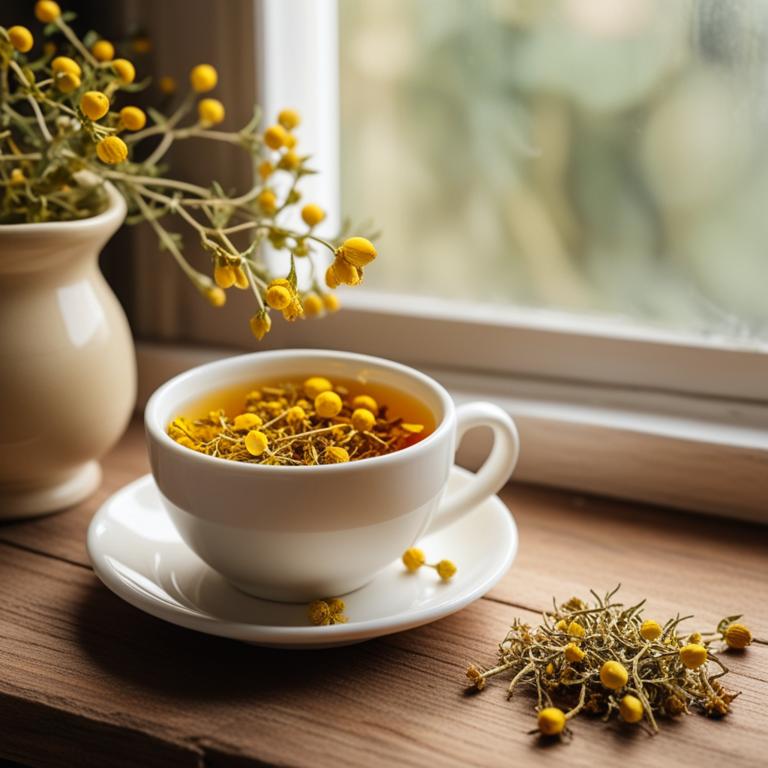
Hypericum perforatum teas, also known as St. John's Wort tea, have been traditionally used to treat hyperthyroidism due to their antithyroid and anti-inflammatory properties.
The bioactive constituents, such as hyperforin and hypericin, help to reduce thyroid hormone production and alleviate symptoms associated with hyperthyroidism, including anxiety and tremors.
The tea's ability to bind to thyroid hormone receptors and inhibit the enzyme 5'-deiodinase also contributes to its therapeutic effects.
Regular consumption of Hypericum perforatum teas may help to regulate thyroid function, reduce thyroid hormone levels, and alleviate symptoms of hyperthyroidism, making it a potential natural remedy for this condition.
10. Lavandula angustifolia teas

Lavandula angustifolia teas have been traditionally used to treat hyperthyroidism due to their calming and balancing effects on the thyroid gland.
The bioactive constituents, including linalool and linalyl acetate, exhibit a sedative effect that helps to reduce anxiety and stress associated with an overactive thyroid.
The anti-inflammatory and antioxidant properties of Lavandula angustifolia teas also contribute to its potential therapeutic benefits by reducing inflammation and oxidative stress that can exacerbate hyperthyroidism symptoms.
By promoting relaxation and reducing inflammation, Lavandula angustifolia teas can help alleviate symptoms of hyperthyroidism and support overall thyroid health.
11. Melissa officinalis teas

Melissa officinalis teas, also known as lemon balm teas, have been traditionally used to treat hyperthyroidism due to their calming and balancing effects on the nervous system.
The bioactive constituents of Melissa officinalis, including flavonoids, terpenoids, and volatile oils, help to reduce stress and anxiety, which can exacerbate hyperthyroidism symptoms.
The herbal preparation works by regulating the thyroid gland's function and reducing the production of thyroid hormones, thereby alleviating symptoms such as rapid heartbeat, weight loss, and nervousness.
The benefits of using Melissa officinalis teas to treat hyperthyroidism include reduced symptoms, improved sleep quality, and a decrease in anxiety and stress levels.